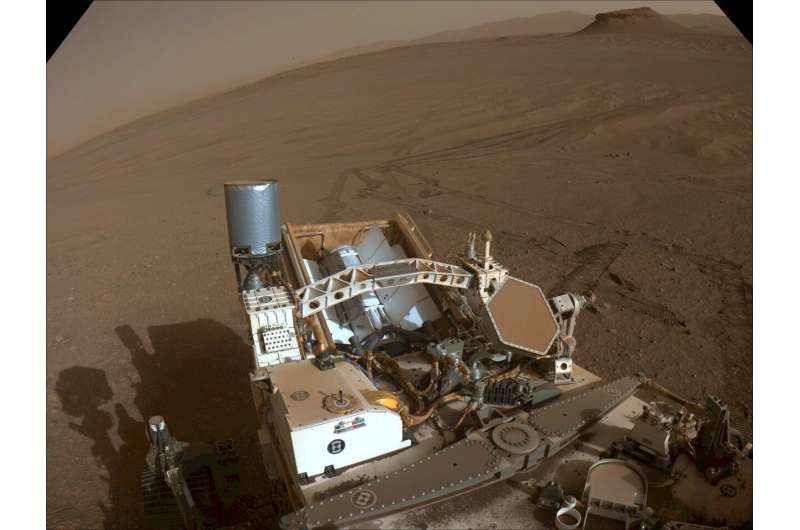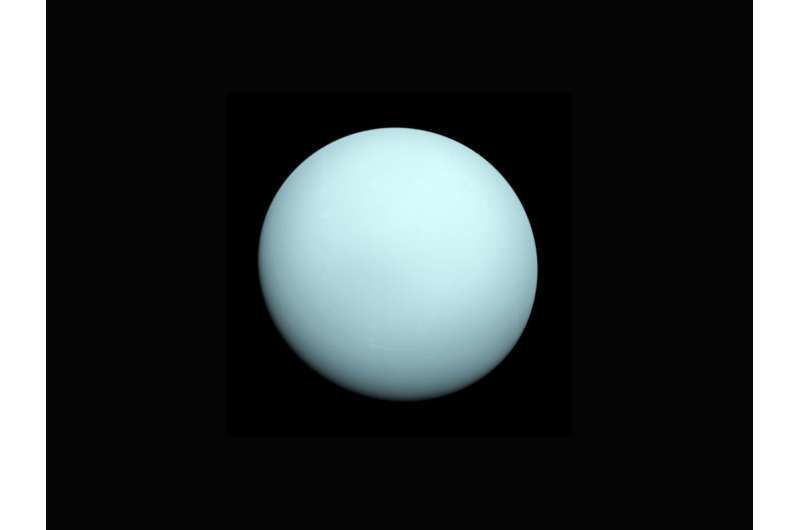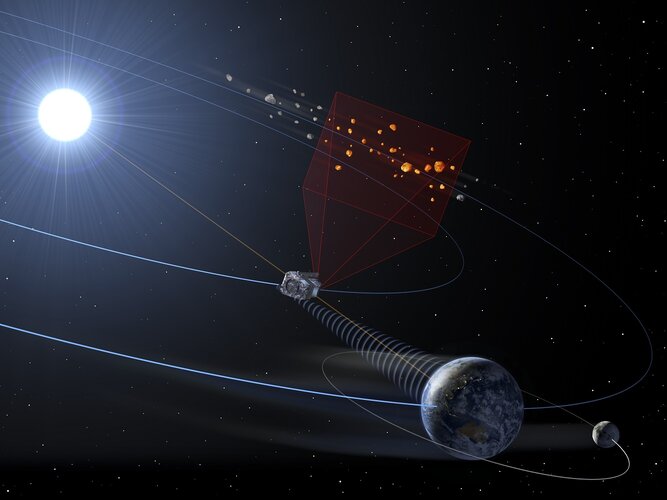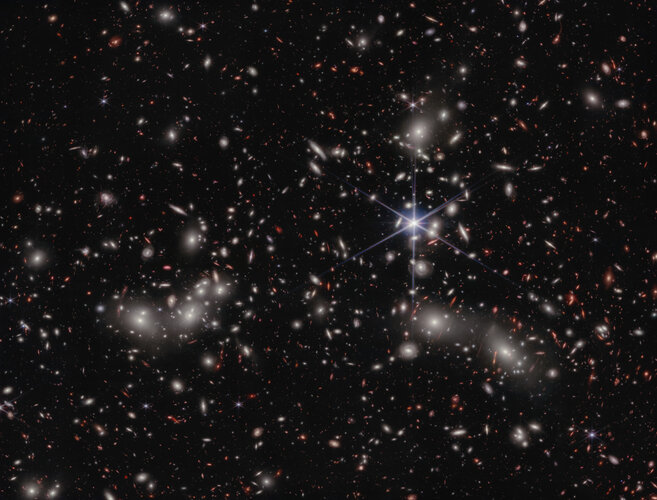
Copernical Team
NASA's Perseverance rover set to begin third year at Jezero Crater

After completing the first sample depot on another world, the rover continues its hunt for Mars rocks worthy of study on Earth.
NASA's Perseverance rover will celebrate its second anniversary on the surface of Mars Saturday, Feb. 18. Since arriving at Jezero Crater in 2021, the six-wheeled, nuclear-powered rover has been examining geologic features and collecting samples of the Red Planet that are central to the first step of the NASA-ESA (European Space Agency) Mars Sample Return campaign.
Japan aborts launch of new rocket carrying missile sensor

The launch of a new flagship series H3 rocket carrying an observation satellite and an experimental infrared sensor that could detect missile launches was aborted Friday after its auxiliary booster engines failed to ignite, Japan's space agency said.
The countdown had started. The Japan Aerospace Exploration Agency livestream and TV footage showed white smoke billowing from the H3's main engine.
Planetary scientist lays out arguments for sending a dedicated probe to Uranus

Kathleen Mandt, a planetary scientist at Johns Hopkins University's Applied Physics Laboratory has published a Perspectives piece in the journal Science arguing that NASA should send a dedicated probe to the planet Uranus. She notes that a window is opening in 2032 for the launch of such a probe.
Planetary scientists have spent far more time studying Mars than they have other planets, partly due to its close proximity and partly due to the fact that Mars has a surface upon which craft can land. Planets that have thick atmospheres, on the other hand, are more difficult to study, especially if they provide no place to land.
Still, Mandt argues, such research is important. And initiating the development of a probe to study Uranus, she adds, would be a good start. She further notes that now would be a good time to begin such plans because the next good window for launching a Uranus probe would be in 2032, when Jupiter's alignment with Earth will allow a slingshot maneuver toward Uranus.
NEOMIR: finding risky asteroids outshone by Sun

Juice one step closer to launch
 Video:
00:04:54
Video:
00:04:54
After many years of study, development, building and testing, ESA’s Jupiter Icy Moons Explorer, Juice, has finally arrived at Europe’s Spaceport in Kourou, French Guiana. At the end of 2022 the spacecraft underwent its final thermal vacuum test at an Airbus Defence and Space facility in Toulouse, as well as its final software verification tests, whereby it was controlled from the ESOC mission control centre in Darmstadt, Germany.
Soon, an Ariane 5 will lift Juice into orbit and send it on its journey to explore the largest planet in our Solar System and its three icy moons, Europa,
Week in images: 13-17 February 2023

Week in images: 13-17 February 2023
Discover our week through the lens
Earth from Space: Liverpool Land, Greenland
 Image:
The Liverpool Land peninsula, on the east coast of Greenland, is featured in this Copernicus Sentinel-2 image.
Image:
The Liverpool Land peninsula, on the east coast of Greenland, is featured in this Copernicus Sentinel-2 image. Umbra agrees to provide Maxar direct access to SAR Constellation
 Maxar Technologies has signed a contract for dedicated access to Umbra' Synthetic Aperture Radar (SAR) imagery constellation, the companies announced February 14.
SAR satellites are able to see past clouds, smoke, and complete darkness using the company's advanced resolution, licensed down to 13 centimeters.
"Maxar and Umbra are breaking new ground for the geospatial intelligence ind
Maxar Technologies has signed a contract for dedicated access to Umbra' Synthetic Aperture Radar (SAR) imagery constellation, the companies announced February 14.
SAR satellites are able to see past clouds, smoke, and complete darkness using the company's advanced resolution, licensed down to 13 centimeters.
"Maxar and Umbra are breaking new ground for the geospatial intelligence ind New technique maps large-scale impacts of fire-induced permafrost thaw in Alaska
 About 40 percent of interior Alaska is underlain by ice-rich permafrost - permanently frozen grounds made up of soil, gravel and sand - bound together by ice. Certain conditions, such as climate warming, have intensified tundra wildfires which have profound implications for permafrost thaw.
Surface vegetation plays a dominant role in protecting permafrost from summer warmth, so any alterat
About 40 percent of interior Alaska is underlain by ice-rich permafrost - permanently frozen grounds made up of soil, gravel and sand - bound together by ice. Certain conditions, such as climate warming, have intensified tundra wildfires which have profound implications for permafrost thaw.
Surface vegetation plays a dominant role in protecting permafrost from summer warmth, so any alterat U.S. Space Force awards Phase III SBIR contract to Astranis
 San Francisco-based geostationary communications satellite operator and manufacturer Astranis Space Technologies announced on February 14, that they won a U.S. Space Force contract worth up to $10 million to integrate the U.S. Department of Defense's (DoD) Protected Tactical Waveform (PTW) using Astranis satellite assets.
The Phase III Small Business Innovation Research (SBIR) contract con
San Francisco-based geostationary communications satellite operator and manufacturer Astranis Space Technologies announced on February 14, that they won a U.S. Space Force contract worth up to $10 million to integrate the U.S. Department of Defense's (DoD) Protected Tactical Waveform (PTW) using Astranis satellite assets.
The Phase III Small Business Innovation Research (SBIR) contract con 
